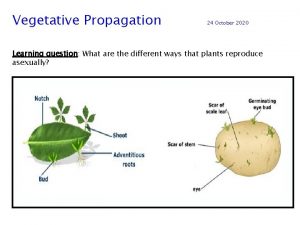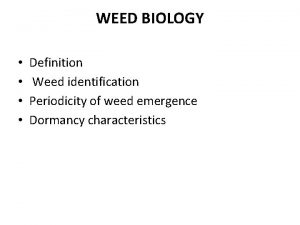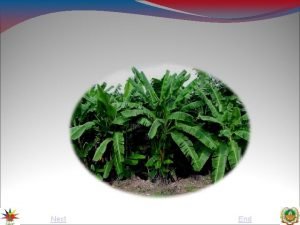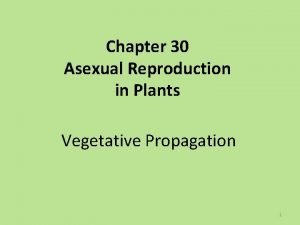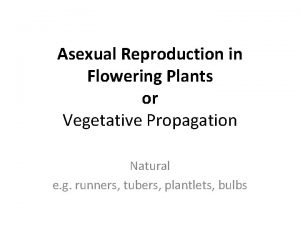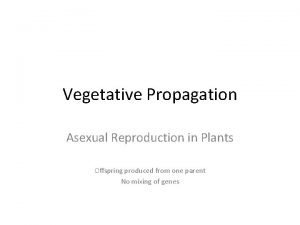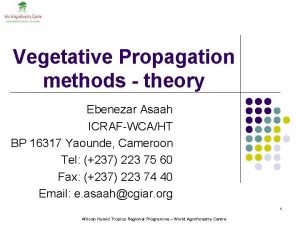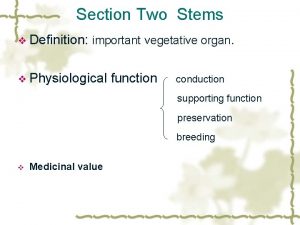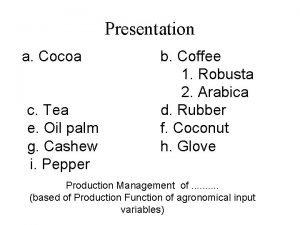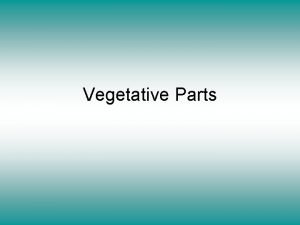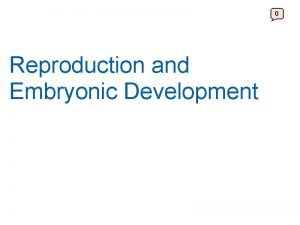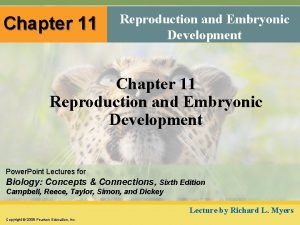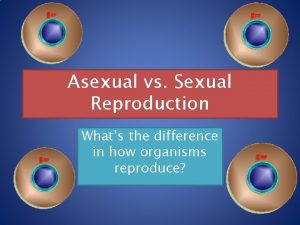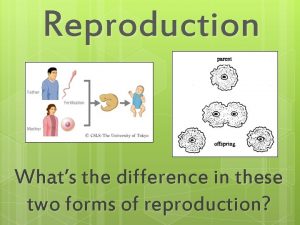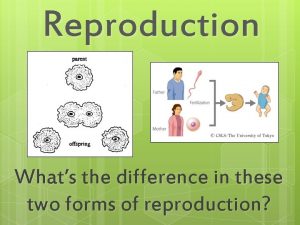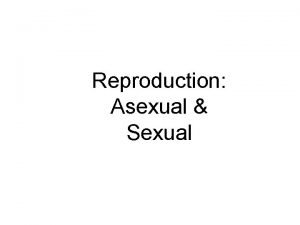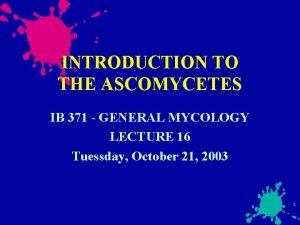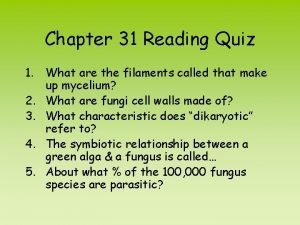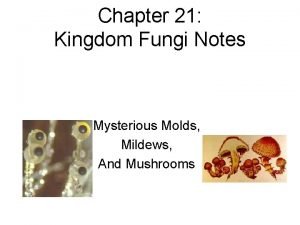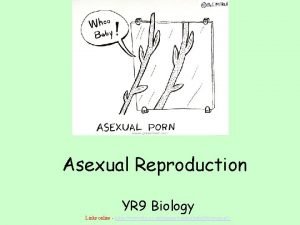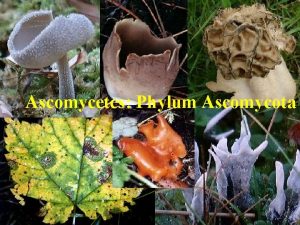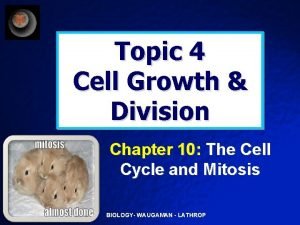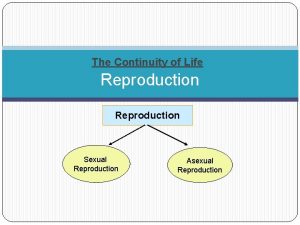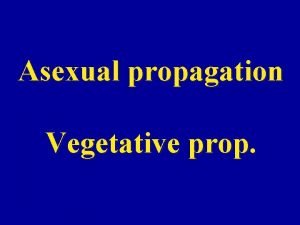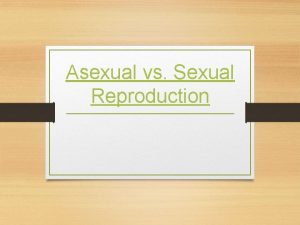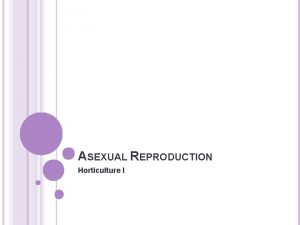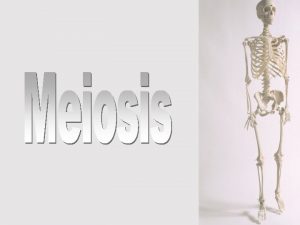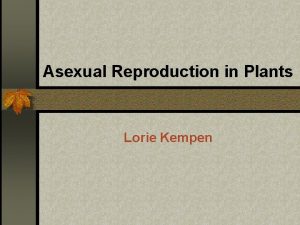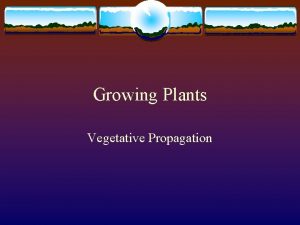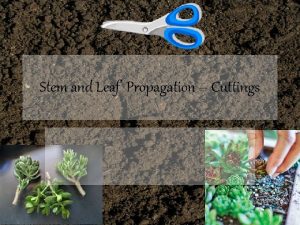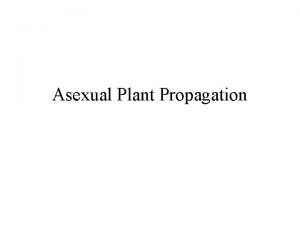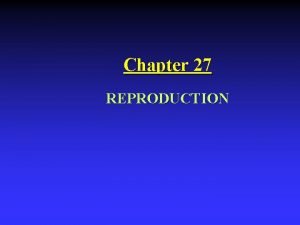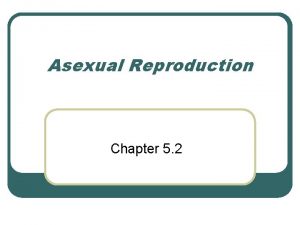Chapter 30 Asexual Reproduction in Plants Vegetative Propagation









































- Slides: 41

Chapter 30 Asexual Reproduction in Plants Vegetative Propagation 1

Learning objectives 1. State that vegetative propagation is asexual reproduction 2. Give 1 example of vegetative propagation from stem, root, leaf, bud 3. Compare reproduction by seed and by vegetative reproduction 4. Outline 4 methods of artificial propagation in flowering plants

Asexual reproduction 1. involves only one parent, 2. does not involve seeds or the fusion of gametes 3. Instead part of a plant’s stem, leaves or roots can become new plants, 4. Produces offspring / clones genetically identical to the parent, 5. Allows plants to be produced much faster then sexual reproduction. 3

Vegetative Propagation • Is a form of asexual reproduction in plants, 1. Can happen naturally e. g. runners, tubers, plantlets, bulbs 2. or it can be done artificially by growers. 4

Methods of Natural Propagation MODIFIED PLANT FOOD STORAGE ORGANS 5

1. Modified Stems (a) Runners • Horizontal stem which grows or runs over the soil surface. • The terminal bud sends up new shoots & down new roots from it. • e. g. strawberries 6

7

Creeping buttercup 8

(b) Stem Tubers • The tips of these underground stems become swollen with stored food- starch. • The swollen tips are called tubers. • The “eyes” are lateral buds that produce new shoots and roots using the stored food. • E. g. Potatoes 9

10

2. Modified Roots Root Tubers • fibrous roots which swell with stored food • the tubers break off & grow into a new plant e. g. dahlias 11

Tap Roots e. g. carrot and turnip, are swollen roots for food storage in plants, storage in biennial plants… they are not reproductive organs 12

3. Modified Leaves Plantlets • Some plants produce small plants on the side of their leaves. • When they reach a certain size, they fall off and grow into new plants. • e. g. cacti 13

4. Modified Buds Bulbs A bulb (an underground bud) has a reduced stem, roots, fleshy leaves swollen with stored food and a main bud in the centre which grows into a new plant e. g. onion, daffodil, tulip 14

15

16

Vegetative propagation may form new plants from the following structures: 1. stems, such as runners in strawberries 2. roots, such as root tubers in dahlias 3. leaves, in cacti 4. buds, in bulbs such as onions or daffodils 17

Comparison of reproduction by seed (sexual) and by vegetative propagation (asexual) 18

The advantages of seed (sexual) reproduction are: 1. variation in offspring 2. more disease resistance 3. less overcrowding due to seed dispersal 4. dormant seeds survive in soil

Advantage to seed formation Sexual (seed) Asexual (vegetative) Cross pollination ensures variation (allows evolution) No variations – can be advantage in commercial horticulture More resistant to disease All plants are of same species susceptible to disease Dispersal reduces competition Overcrowding and competition Seeds can remain dormant and No seeds formed – survive unfavourable conditions no dormancy 20

The advantages of vegetative (asexual) reproduction are: 1. it is a simple process 2. no external agents are needed 3. young plants show fast growth 4. there is little waste

Advantage to vegetative propagation Sexual (seed) Asexual (vegetative) Complex process Simple process Depends on outside agents for seed dispersal No outside agents needed Slow growth of young plants to maturity Rapid growth Wasteful e. g. petals, pollen, fruit No waste 22

Vegetative propagation Artificial methods used in agriculture & horticulture to propagate / grow new plants that are identical to the parent 23

1. Cuttings • Parts of a plant (usually shoots) that are removed from the parent plant • rooted in well-watered compost, soil or rooting powder & • allowed to form into a new plant • e. g. busy lizzie, geranium 24

25

2. Grafting • Involves fixing / binding together the cut surfaces of 2 plants (similar) so they grow as one. • Useful qualities from both plants combined into one e. g. rose flower and thorn-less stem e. g. apple trees. 26

27

28

3. Layering • A branch of a plant is bent over and pinned down into the soil at a node. • It is covered over with soil & eventually new roots & shoots develop. • Useful for the propagation of woody plants e. g. blackberry, gooseberry. 29

30

Micro- propagation (Tissue Culture) • Some cells are removed from plant are placed in a dish with nutrients & growth regulators • They grow into a group of similar cells called a callus • Which develops into a small plant & then placed into compost. 31

• Entire plants can be grown from a small piece of stem, leaf or root tissue • Used in mass production of house plants and crops such as bananas and strawberries. • Provides a larger number of plants more quickly than cuttings 32

Micropropagation (Tissue Culture) 33

Artificial methods of vegetative propagation include: 1. cuttings – shoots that are removed from a plant and allowed to form new plants 2. grafting – a section from one plant is attached to a section of another plant 3. layering – a branch of a plant is fixed into the soil to allow it to form roots and a new plant 4. micropropagation – the growth of new plants from tiny pieces of a parent plant

Cloning • All offspring genetically identical - produced asexually • Clones are produced by mitosis • All the offspring from the various methods of vegetative reproduction (both natural and artificial) mentioned are examples of clones. 35

Dolly the clone 36

• Since 1996, when pioneering Scots cloned Dolly the sheep from an adult sheep cell, scientists have cloned mice, cows, goats, pigs, rabbits, cats, rats, deer, mules, horses, and dogs. • Yet despite all the success, cloning remains really, really hard to do. • Nature makes clones--genetic duplicates--all the time. We call them identical twins. But twins grow according to the DNA code from embryonic stem cells--cells that are supposed to divide and grow into complete adult beings. • Cloners try to get the DNA from adult cells to do the same thing. 37

Advantages of Cloning Potential benefits to modern medicine – 1. cells can be manipulated to mimic other types of cells, new ways to treat diseases like cancer and Alzheimer’s. 2. Cloning also offers hope to persons needing organ transplants - producing more animals that can act as suitable donors. Pig livers have been successfully transplanted to human beings. 38

Disadvantages of Cloning 1. The Element of Uncertainty- in the cause of Dolly, many embryos were destroyed - 277 eggs before the desired result was achieved. 2. Inheriting diseases - Cloning creates a copy of the original. A human clone would therefore inherit the genetic traits of its predecessor. 3. The Potential for Abuse - clones could be grown in a farm-like fashion simply for harvesting organs or stem cells, devalue human life ? ? 39

END 40

Definition Asexual reproduction • does not involve the manufacture or union of sex cells or gametes e. g. binary fission, fragmentation, spore formation and budding • It involves only one parent and offspring are genetically identical (have the same genetic content) to the parent 41
 Vegetative propagation
Vegetative propagation Binary fission in bacteria
Binary fission in bacteria Sexual reproduction and asexual reproduction
Sexual reproduction and asexual reproduction Venn diagram of sexual and asexual reproduction in animals
Venn diagram of sexual and asexual reproduction in animals Disadvantages of vegetative propagation
Disadvantages of vegetative propagation Advantages of vegetative propagation
Advantages of vegetative propagation Artificial vegetative reproduction
Artificial vegetative reproduction Vegetative propagation by stem can be seen in
Vegetative propagation by stem can be seen in Vegetative propagation
Vegetative propagation Vegetative propagation
Vegetative propagation Roots method of vegetative propagation
Roots method of vegetative propagation Vegetative propagation of tea
Vegetative propagation of tea Vegetative reproduction requires mieosis.
Vegetative reproduction requires mieosis. Chapter 19 asexual reproduction
Chapter 19 asexual reproduction Asexual propagation layering
Asexual propagation layering Examples of animals reproduce asexually
Examples of animals reproduce asexually Protodern
Protodern Types of asexual reproduction
Types of asexual reproduction Parasitism phylum
Parasitism phylum Difference between sexual and asexual reproduction
Difference between sexual and asexual reproduction Benefits of sexual propagation
Benefits of sexual propagation Asexual reproduction
Asexual reproduction Gastrula
Gastrula Is mitosis asexual
Is mitosis asexual Whats asexual reproduction
Whats asexual reproduction Reproduction in organism
Reproduction in organism Synapsis and crossing over
Synapsis and crossing over Whats a sexual reproduction
Whats a sexual reproduction Whats asexual reproduction
Whats asexual reproduction Sexual reproduction
Sexual reproduction Ascomycetes habitat
Ascomycetes habitat Asexual and sexual reproduction venn diagram
Asexual and sexual reproduction venn diagram Ascomycota asexual reproduction
Ascomycota asexual reproduction Ascomycota asexual reproduction
Ascomycota asexual reproduction Budding asexual reproduction
Budding asexual reproduction Venn diagram sexual and asexual
Venn diagram sexual and asexual Runner plant examples
Runner plant examples Black truffle domain and kingdom
Black truffle domain and kingdom How do angiosperms reproduce
How do angiosperms reproduce Asexual reproduction of budding
Asexual reproduction of budding Sexual or asexual reproduction
Sexual or asexual reproduction What phylum does squidward belong to
What phylum does squidward belong to
